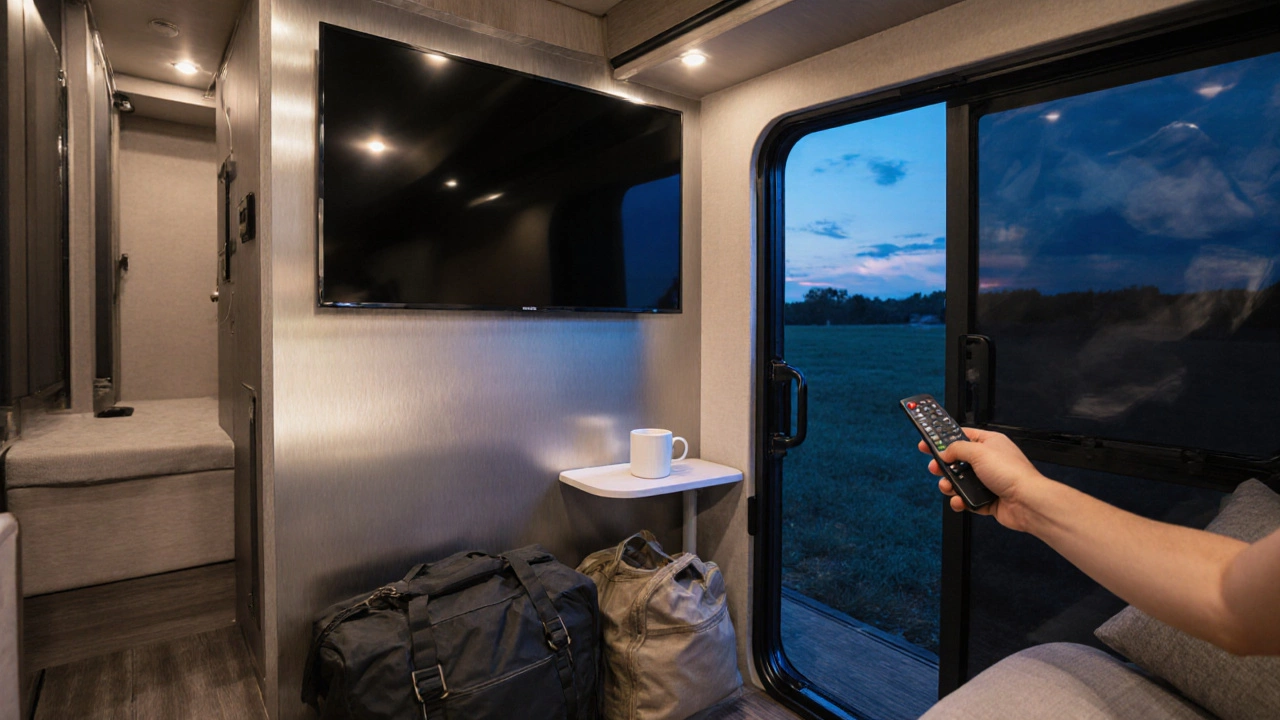TV Power Inverter – Your Road‑Trip Entertainment Solution
When working with TV power inverter, a device that turns a vehicle’s DC battery power into AC electricity so you can plug in a television. Also known as inverter for TV, it lets you watch shows wherever you park. TV power inverter is essential for anyone who wants a TV in a motorhome, camper van, or tiny house on wheels.
Another key player is the motorhome, a self‑contained vehicle that provides living space, kitchen, and bathroom facilities. Most motorhomes run on a 12‑volt battery system, which supplies lights, fridge, and heating. To run a TV, you need to convert that 12 V DC into the 120 V or 230 V AC your screen expects. That conversion is the job of the TV power inverter, and the quality of the inverter directly influences how well your TV performs.
The battery, a rechargeable lead‑acid or lithium pack that stores the vehicle’s electrical energy is the power source behind the whole setup. An inverter draws current from the battery, steps it up, and supplies the TV. If the battery is undersized or the inverter is inefficient, you’ll see short runtime or a drop in voltage that can flicker the picture. Choosing the right battery capacity and keeping it well‑maintained are simple ways to protect your TV and extend your viewing time.
Choosing the Right 12‑Volt TV and Inverter Pair
A 12‑volt TV, a television designed to run directly from a vehicle’s 12 V DC supply can skip the inverter entirely, but those models are often smaller and pricier. Most travelers prefer a standard 120/230 V TV and pair it with an inverter that matches the TV’s wattage. The rule of thumb: pick an inverter rated at least 20% higher than the TV’s maximum power draw. This extra headroom prevents overload and keeps the battery from sagging under load.
The relationship between these three entities—TV power inverter, motorhome, and battery—forms a simple chain: the battery supplies DC power, the inverter converts it to AC, and the TV consumes the AC. Understanding this chain helps you avoid common pitfalls like using an undersized inverter, which can cause dimming, overheating, or a blown fuse. It also clarifies why a high‑quality inverter with pure‑sine wave output is recommended for sensitive electronics; it mimics the smooth waveform of utility power and protects your TV’s internal components.
Installation tips matter, too. Keep the inverter in a well‑ventilated spot, close to the battery but away from direct sunlight. Use appropriately sized cables—thin wires cause voltage drops that waste power and can overheat. Secure the unit with brackets to prevent movement while you drive. Finally, add a dedicated fuse between the battery and inverter; it’s a cheap safeguard that stops a short circuit from draining the whole house battery.
By now you’ve seen how a TV power inverter fits into the larger picture of motorhome electrics. Below you’ll find a curated list of articles that dive deeper into legal camping rules, campsite electricity basics, battery‑friendly TV setups, and other practical advice for making the most of your road‑trip entertainment. Whether you’re a first‑time renter or a seasoned rver, the posts ahead will give you the details you need to stay powered, stay legal, and stay entertained on the open road.
Can a Regular TV Run in Your Motorhome? Practical Answers & Tips
Learn if a regular flat‑screen TV can run in a motorhome, covering power needs, wiring steps, common issues and when to choose a 12‑V RV TV.
